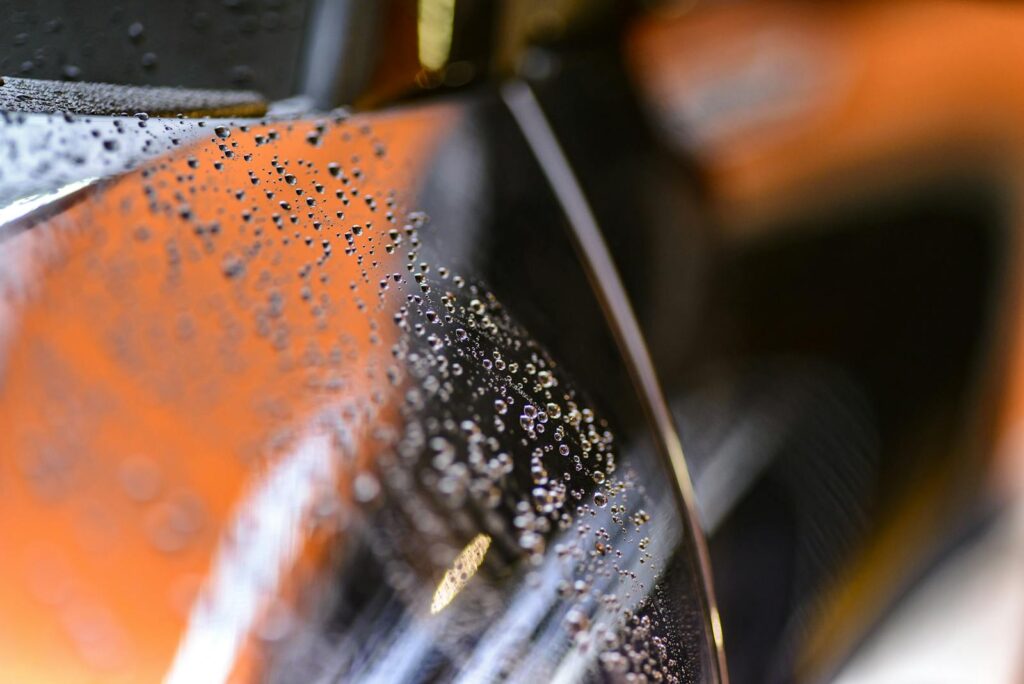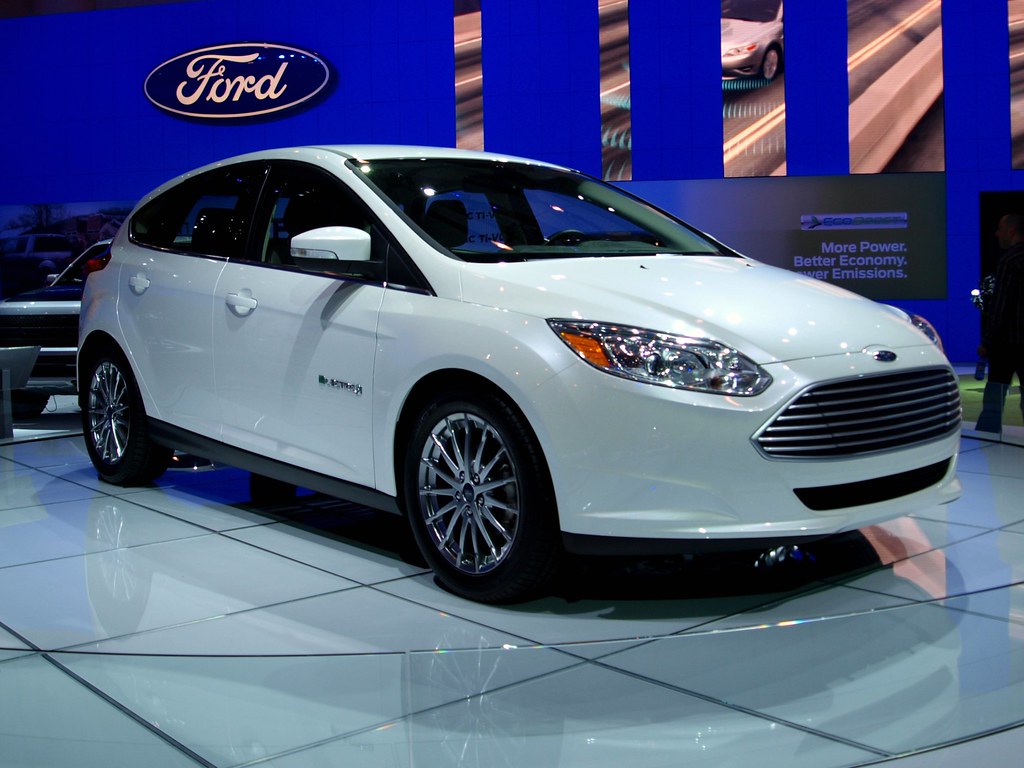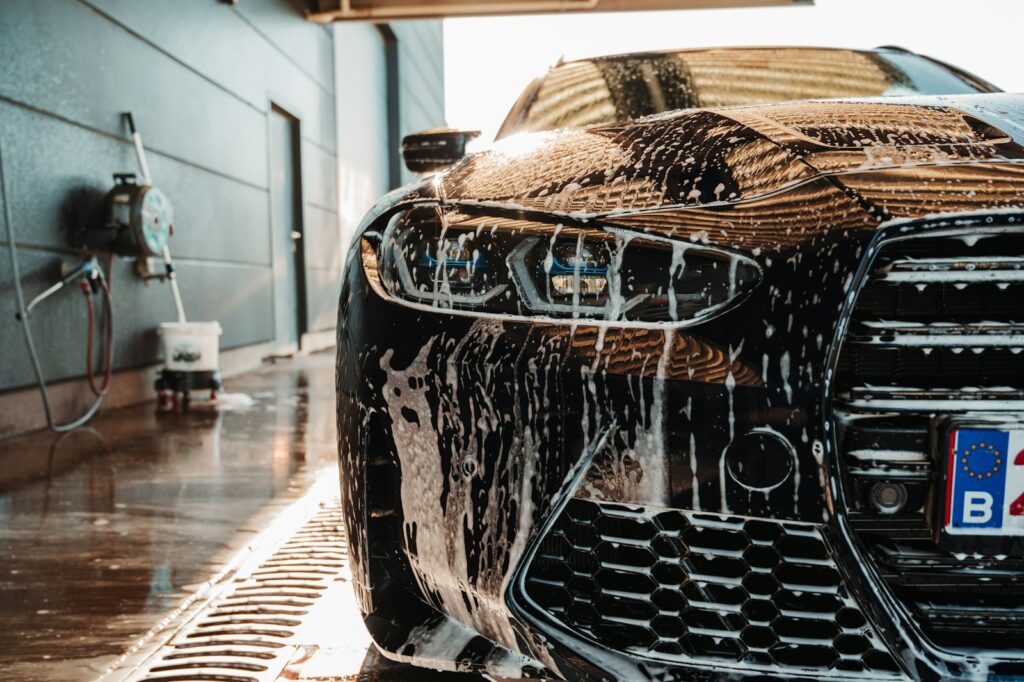
As car owners, we often view a gleaming vehicle as a point of pride, a testament to our care and attention. Yet, the ritual of washing and waxing extends far beyond mere aesthetics; it’s a critical investment in your vehicle’s longevity, protection, and overall value. Many might consider it a routine chore, but beneath the surface shine lie layers of scientific benefits and practical advantages that safeguard your automotive asset from the relentless assault of environmental hazards. This isn’t just about looking good; it’s about making informed decisions that protect your investment for years to come.
In an age where our vehicles are exposed daily to a barrage of harmful elements—from harsh UV rays and corrosive road salt to abrasive dirt and acidic bird droppings—understanding the true power of consistent car care is more important than ever. This comprehensive guide, crafted with the authoritative and user-focused insights of Consumer Reports, will meticulously unravel the often-overlooked benefits of regular washing and waxing. We aim to equip you with the knowledge to not only appreciate the visible gleam but also to comprehend the profound, protective processes at play, ensuring your car remains pristine and protected, ultimately safeguarding your investment.
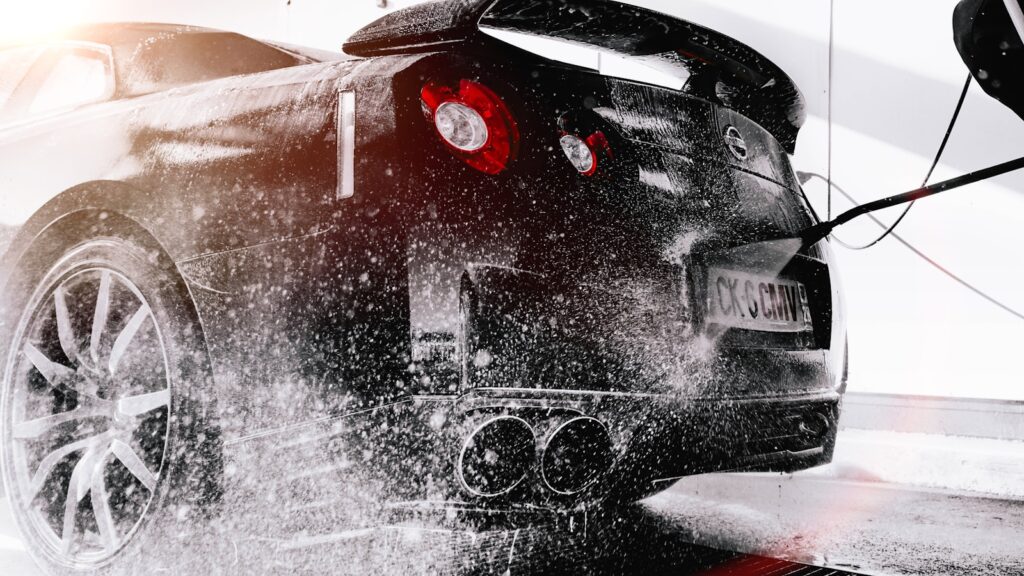
1. **Creating a Robust Protective Barrier and Shielding from Environmental Elements**At the heart of car waxing lies its primary function: establishing a formidable protective barrier. This isn’t merely a thin film; it’s a strategically applied layer that bonds to your car’s surface, filling in tiny imperfections and creating an incredibly smooth, glossy coat. This layer acts as the initial line of defense, intercepting harmful elements like dirt, water, and UV rays before they can reach and compromise your car’s delicate paintwork. It effectively becomes a sacrificial shield, taking the brunt of daily wear and tear.
This protective layer is particularly crucial given the myriad of environmental contaminants our vehicles face. Road salt, de-icing chemicals, industrial fallout, and even acid rain create corrosive films that gradually eat away at your car’s clear coat. Furthermore, tree sap and insect remains contain acids that can etch into paint if left untreated. The wax barrier prevents these destructive elements from making direct contact, significantly reducing the potential for permanent damage and preserving the paint’s integrity.
Beyond chemical threats, the wax layer also adds a degree of abrasion resistance. While it won’t protect against deep scratches, it minimizes damage from minor abrasions, swirls, and marks caused by everyday occurrences like road debris or car washes. This consistent defense against physical wear and tear is vital for maintaining your paint’s aesthetic appeal and functional robustness over time, acting as an investment in proactive exterior care.
Read more about: Beyond the Showroom Shine: 12 Critical Factors Dulling Your Car’s Finish and How to Combat Them
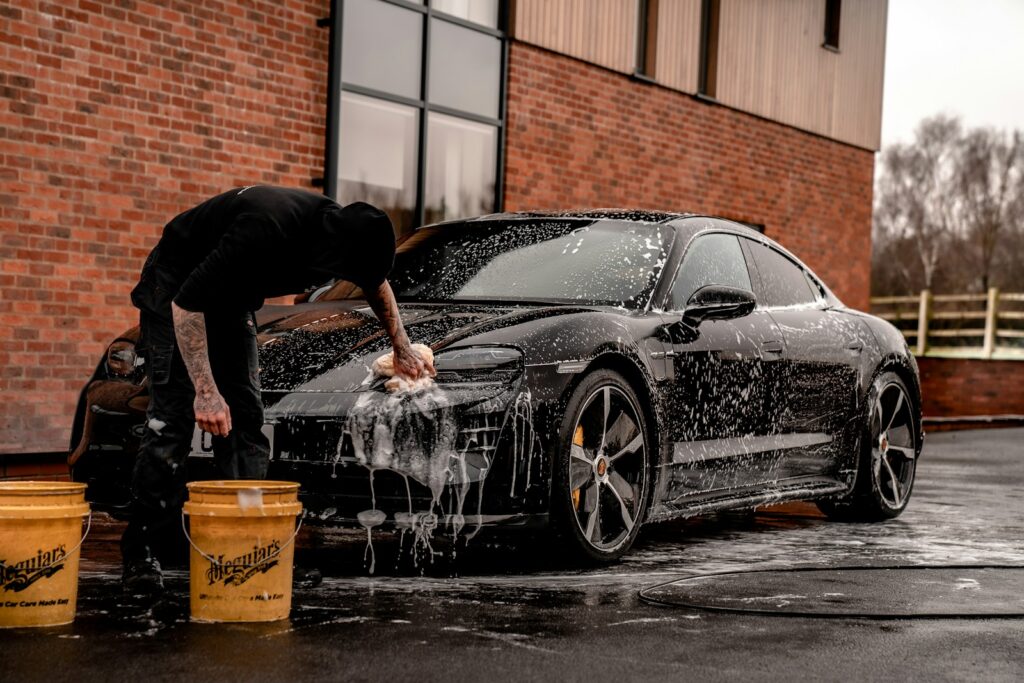
2. **Harnessing the Hydrophobic Effect for Effortless Cleaning and Contaminant Repellence**One of the most visually impressive and practically beneficial aspects of a waxed car is its hydrophobic effect. This phenomenon causes water to bead up into neat droplets and effortlessly slide off the surface rather than sitting and soaking in. This is critical for preventing unsightly water spots, which form when mineral-laden water evaporates, leaving behind deposits that can become permanent. By facilitating water runoff, wax minimizes opportunities for these deposits to adhere.
This magic directly translates to making your car significantly easier to clean. Since dirt, dust, and other contaminants are less likely to stick to the smooth, slippery wax layer, they wash off much more readily during routine cleanings. This means less aggressive scrubbing is needed, which not only saves time and effort but also minimizes the risk of introducing new swirl marks or scratches to the paintwork.
The exceptional contaminant resistance also ensures your car stays cleaner for longer. Airborne particles, road grime, and environmental pollutants struggle to find purchase on a slick, waxed surface, reducing the need for frequent washes. This cyclical benefit means waxing protects, keeps the car cleaner, makes subsequent cleaning easier, and maintains that pristine “just washed” look for extended durations. This proactive defense against moisture penetration also combats rust and oxidation by sealing the surface.
3. **Preserving Paint Integrity and Ensuring Long-Term Vehicle Longevity**Your car’s paint job is more than decorative; it’s the primary defense against rust, corrosion, and damage to the underlying metal. Preserving its integrity is paramount for your vehicle’s overall health and lifespan. Regular waxing plays a pivotal role by creating a robust barrier that shields the paint from harmful elements, preventing degradation and extending its functional life, acting as a sacrificial layer against abrasions and exposure.
The wax layer actively works to prevent moisture penetration, one of the leading causes of rust and oxidation, by effectively sealing the surface and preventing water from seeping into crevices or microscopic imperfections. This proactive defense against corrosion is invaluable in maintaining the structural integrity of your vehicle. Consistent waxing thus significantly extends the lifespan of your car’s paintwork by preventing issues like premature aging, fading, or peeling due to UV damage.
Unwaxed vehicles lose this protective barrier, leaving paint vulnerable to oxidation and dulling. By forming a protective shield, wax ensures your car retains its original vibrant finish for many more years than a neglected vehicle. This commitment to maintaining paint integrity through regular waxing contributes directly to the overall longevity of your vehicle, protecting your investment and potentially delaying costly paint corrections.
Read more about: Beyond the Showroom Shine: 12 Critical Factors Dulling Your Car’s Finish and How to Combat Them
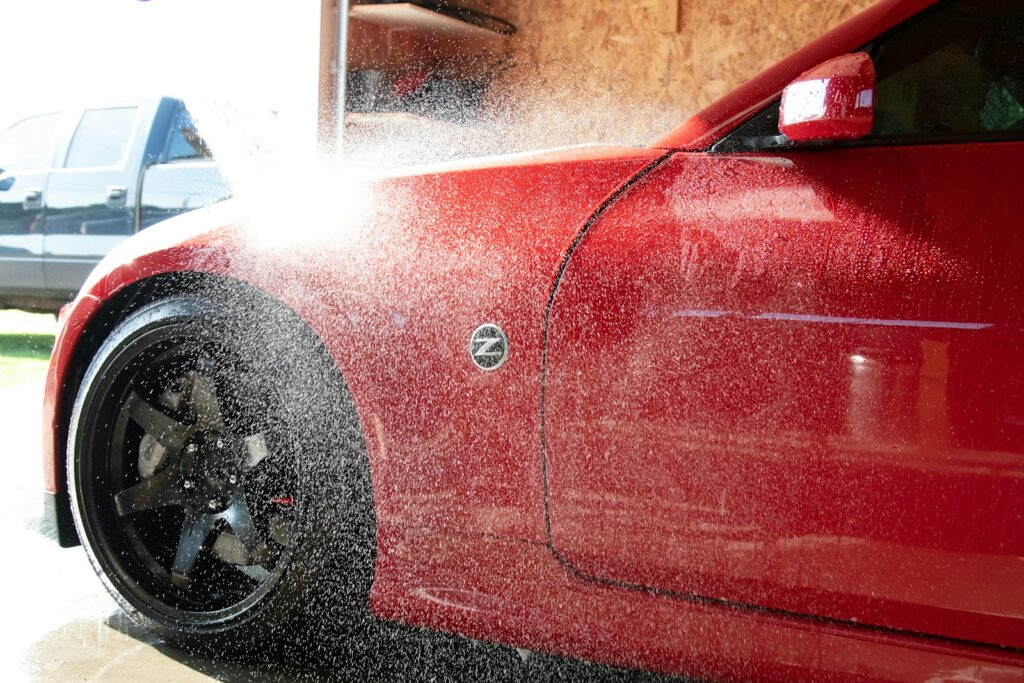
4. **Enhancing Aesthetic Appeal and Sustaining a Showroom Shine**While the protective benefits are foundational, the immediate and most visually striking advantage of waxing is the dramatic enhancement of your car’s aesthetic appeal. A well-waxed vehicle radiates a deep, glossy shine that makes the car appear newer, more vibrant, and exceptionally well-maintained. This transformation brings out the richness of its color, giving it a showroom-fresh allure that consistently turns heads.
The mechanism behind this enhanced shine is sophisticated. Wax fills in microscopic imperfections and minor scratches on the paint’s surface, creating a remarkably smooth and uniform layer. This smoothed surface then reflects light more evenly and intensely, maximizing the paint’s ability to bounce light. The result is a mirror-like finish that accentuates the depth and clarity of your vehicle’s color, delivering an undeniable “wet look” that signifies superior care.
Regular waxing is essential for sustaining this pristine appearance between applications. High-quality carnauba waxes, for instance, are renowned for producing a warmer, deeper shine. This consistent application ensures the vehicle maintains its freshly detailed look, preventing the gradual dulling and fading that occur on unprotected surfaces. The improved appearance reinforces the perception of a meticulously cared-for automobile, contributing to owner pride and an enduring sense of satisfaction.
Read more about: Driven to Endure: 12 Luxury Cars That Master High Mileage Beyond 220,000 Kilometers
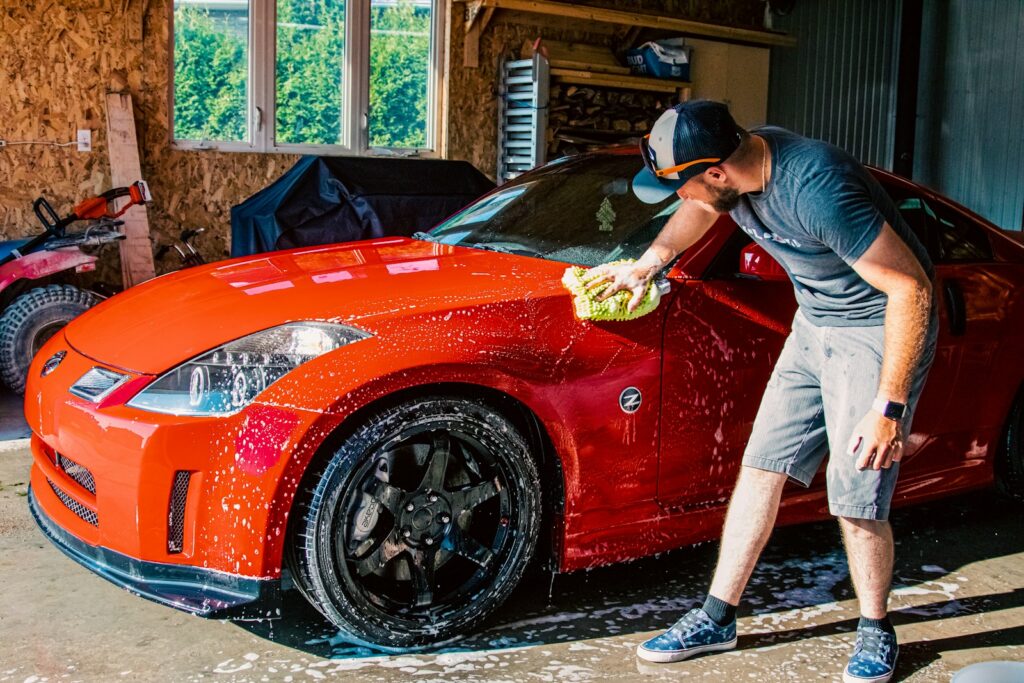
5. **Dispelling Common Misconceptions About Car Waxing for Informed Decisions**Despite its widely recognized benefits, car waxing is often shrouded in common myths and misunderstandings that can lead car owners astray. Dispelling these misconceptions is vital for making informed decisions and adopting truly effective car care practices, ensuring you harness the full potential of waxing without falling prey to unrealistic expectations or counterproductive methods.
One prevalent myth is that “waxing is only about shine.” While the glossy finish is a delightful outcome, the primary purpose is protection. Wax creates a vital barrier against detrimental elements such as UV rays, water, and contaminants. The dazzling shine, while a bonus, is secondary to the robust, long-term protection it affords your vehicle’s paintwork.
Another misconception is believing that “waxing once is enough.” A single application does not provide indefinite protection. The wax layer degrades over time due to constant exposure to weather, road salts, contaminants, and even frequent washing. Experts recommend waxing every 3-4 months for optimal protection, or more frequently in harsh conditions. Consistency, not a one-off effort, is key to sustained defense.
The idea that “more wax equals better protection” is also a trap. Applying too much wax can be counterproductive. A thin, even layer is required for maximum protection and an optimal finish. Over-waxing makes buffing difficult, leaving hazy residue or an unsightly buildup that attracts dirt. Precision and moderation yield superior results.
Finally, the myth that “waxing can fix paint damage” needs addressing. Waxing cannot repair existing scratches, chips, or fading. While it can temporarily reduce the appearance of minor imperfections by filling them in, it won’t restore damaged paint. For genuine repair, intensive processes like polishing or professional touch-ups are necessary. Waxing is preventative and protective, not restorative.
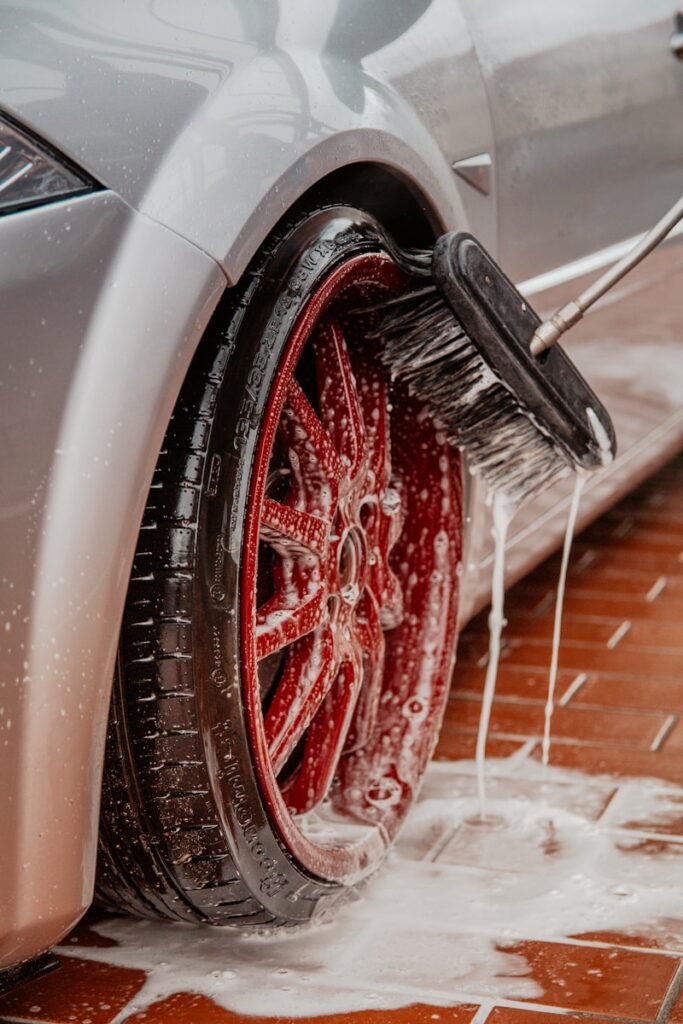
6. **Optimal Washing Techniques for Peak Performance**Achieving and maintaining a pristine vehicle exterior extends far beyond a simple rinse; it demands a precise and considered approach to washing. While automatic car washes offer convenience, they often employ harsh brushes that can inflict microscopic scratches and swirl marks on your clear coat, dulling the finish over time. For truly superior and scratch-free results, hand washing remains the gold standard, providing meticulous control over the cleaning process and allowing for targeted attention to heavily soiled areas without risking paint damage.
Selecting the right cleaning products is paramount to effective car care, and this means moving beyond household detergents like dish soap, which are known to strip away protective wax layers and can even damage paint. Instead, prioritize car-specific washing products, especially pH-neutral car shampoos that produce rich suds to gently lift dirt from the surface. Incorporating pre-wash products such as snow foam can further loosen stubborn grime before the main wash, significantly reducing the risk of scratching when manual contact begins. Remember to use cleaners specifically formulated for wheels and tires, as these are designed to tackle brake dust and road grime without harming specialized finishes.
Employing the correct tools and techniques is the final pillar of optimal washing. Microfiber towels, with their unique ability to trap dirt particles, are indispensable for safe washing and drying. Designate separate towels for different areas—wheels, paint, windows—to prevent cross-contamination. When washing, adopt straight-line or gentle circular motions, always working from the top of the vehicle downwards, where dirt and grime accumulation is typically heaviest. For drying, plush, highly absorbent microfiber towels are essential; patting the surface rather than wiping helps minimize the risk of introducing scratches. A technique known as the “sheeting method,” involving slowly pouring clean water over panels, can also help carry away remaining droplets before final drying, further preventing water spots.
Read more about: Shield Your Ride: Simple, Effective Ways to Banish Rust from Your Truck’s Undercarriage This Winter and Beyond
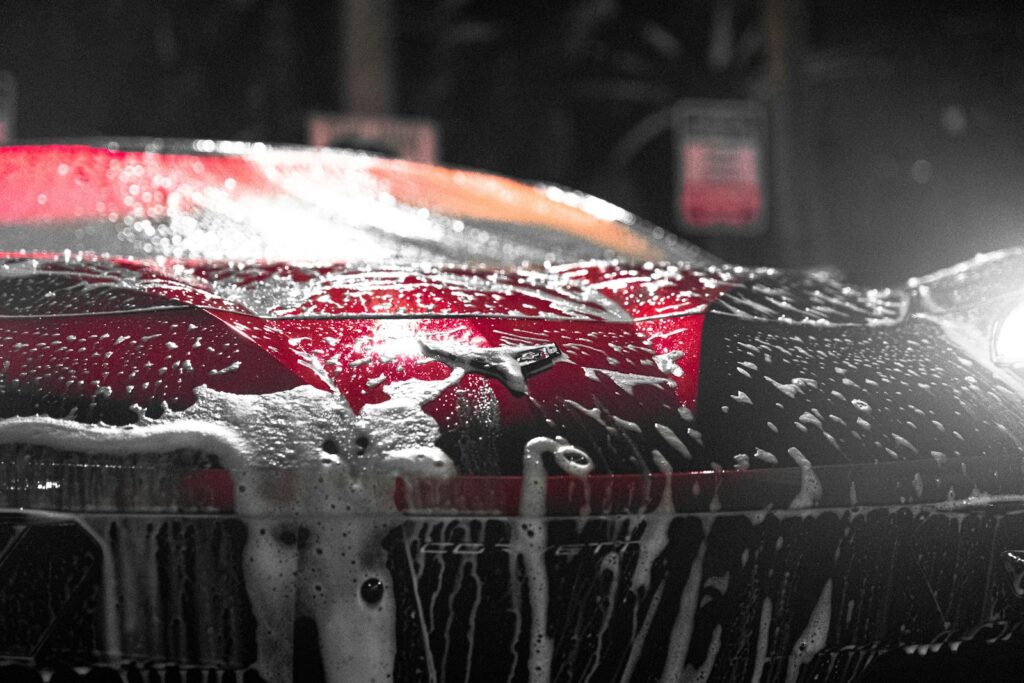
7. **Effective Waxing and Polishing Methods for Enduring Brilliance**Once the car is thoroughly clean, the next crucial step in preserving its paint and enhancing its appearance involves thoughtful waxing and, when necessary, polishing. The market offers various wax formulations, including paste, liquid, and spray, each with distinct advantages. Paste waxes are often favored for their deep shine and durable protection, though they demand more application effort. Liquid waxes strike a balance between ease of application and good protection, making them a popular choice for many car owners. Synthetic polymer waxes, often called sealants, typically offer longer-lasting protection—up to six months—compared to traditional carnauba waxes, which usually last one to three months but are celebrated for their warmer, deeper shine. Your vehicle’s color can also guide your choice; dark colors benefit from deep-gloss enhancers, while lighter vehicles shine with products that enhance brightness.
Proper wax application techniques are critical for achieving professional-quality results. Always ensure your vehicle is meticulously cleaned and completely dry before you begin, as any trapped dirt can lead to scratches during application. Work in a cool, shaded environment to prevent the wax from drying too quickly, which can result in streaks or uneven coverage. Apply the wax using a clean foam applicator pad, working in small, overlapping circular motions across one section at a time. The key is to apply a thin, even coat; excessive wax not only wastes product but also makes removal considerably more challenging and can leave behind hazy residue. Allow the wax to cure to a distinct haze, typically 5-10 minutes depending on the product, before gently buffing it off with clean microfiber towels, folding the towel frequently to present a fresh surface.
Polishing, distinct from waxing, serves a different yet complementary function in car care. While waxing protects, polishing is designed to remove minor imperfections in the clear coat, such as swirl marks, light scratches, and oxidation, thereby creating a smoother, more reflective surface. Car polishes contain mild abrasives that mechanically smooth out microscopic roughness, significantly enhancing the paint’s shine and depth. Many detailers advocate for machine polishers to ensure consistent results, though hand application can be effective for smaller, targeted areas. It is generally recommended to polish before waxing, ensuring any surface imperfections are addressed prior to sealing the paint with a protective layer.
This two-step process—polishing to correct and refine, then waxing to protect and enhance—delivers superior, long-lasting results. After polishing, carefully wipe away any residue with clean microfiber towels before proceeding with your chosen wax. This methodical approach not only ensures the deepest shine but also maximizes the protective benefits of the wax, resulting in a finish that truly stands out and remains safeguarded against future degradation, an investment in your vehicle’s enduring brilliance.
Read more about: Unlocking the ‘Magical’ Scratch Erasers: Top Car Finish Solutions That Deliver Instant Results, With or Without a Buffing Tool!
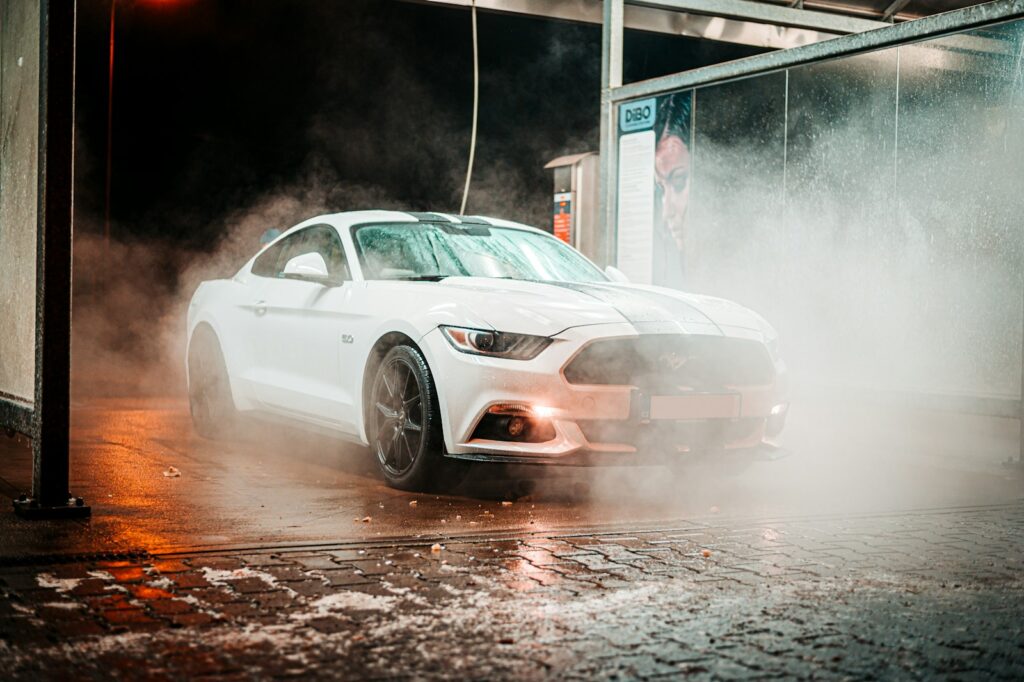
8. **The Indispensable Role of Clay Bar Treatments**Even after a thorough wash, your vehicle’s paint surface can harbor stubborn, embedded contaminants that regular washing simply cannot dislodge. This is where the clay bar treatment becomes an indispensable component of an advanced car care routine. Designed to lift and remove particles like industrial fallout, brake dust, tree sap, and road tar that bond tenaciously to the paint, a clay bar effectively decontaminates the surface. The result is an incredibly smooth finish that not only looks cleaner but also provides an optimal foundation for subsequent waxing and polishing, significantly enhancing their effectiveness.
Determining when to use a clay bar is relatively straightforward: if, after washing your car, the paint surface feels rough, gritty, or bumpy to the touch, it is an indicator that embedded contaminants are present. Most detailing experts recommend performing a clay bar treatment two to three times annually, particularly before each major waxing session, to ensure the paint remains pristine. Vehicles frequently exposed to harsh environmental conditions, such as those driven in industrial areas or coastal regions, may benefit from more frequent applications to counteract the increased accumulation of pollutants.
Executing a clay bar treatment requires adherence to specific steps to ensure safety and effectiveness. Begin by thoroughly washing and drying your vehicle to remove all loose dirt and grime. Next, select a high-quality automotive clay bar and a compatible clay lubricant spray. Break off a small, workable piece of the clay bar, as this prevents contaminating your entire bar if you accidentally drop a piece. Liberally spray the lubricant onto a small section of the car’s surface, then gently glide the clay back and forth in straight lines with light to medium pressure. The clay will pick up embedded contaminants, and you’ll feel less resistance as the surface becomes smooth. Always remember to apply a fresh coat of wax or sealant immediately after a clay bar treatment, as the process removes any existing protection, leaving the paint exposed.
Read more about: Beyond the Showroom Shine: 12 Critical Factors Dulling Your Car’s Finish and How to Combat Them
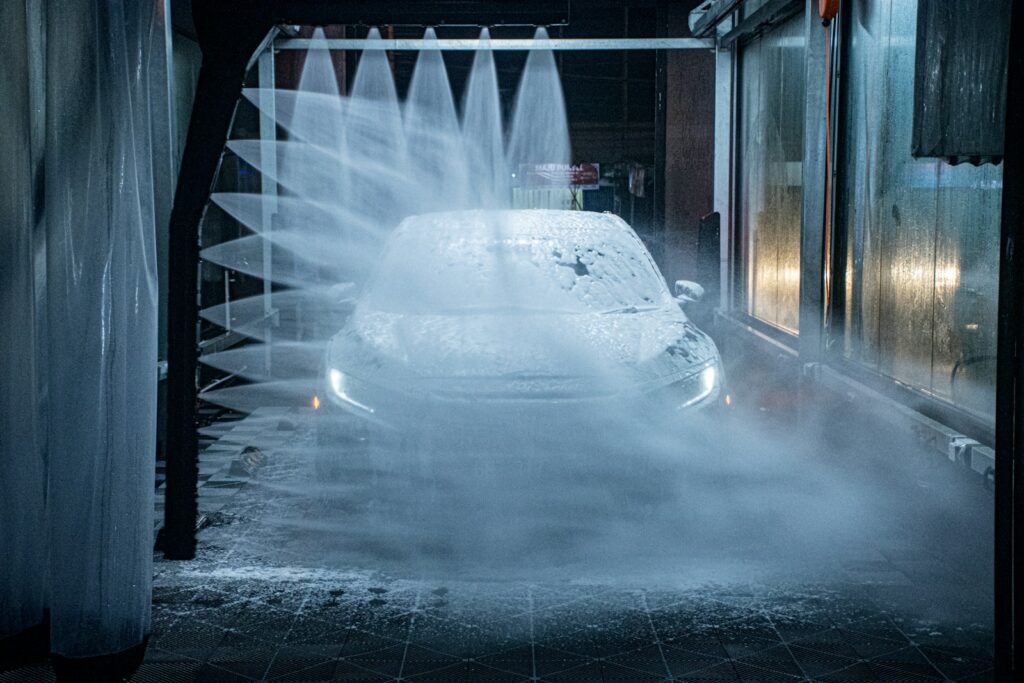
9. **Safeguarding Your Investment: Resale Value and Cost Savings**Beyond the immediate aesthetic gratification, consistent car care, particularly regular washing and waxing, delivers profound long-term financial benefits by preserving your vehicle’s resale value and generating significant cost savings over time. A vehicle with a meticulously maintained exterior instantly conveys to potential buyers that the owner has invested care not only in its appearance but likely in its mechanical components as well. Professional appraisers consistently prioritize paint condition when assessing a vehicle’s worth, with studies indicating that well-maintained cars can retain up to 10% more value compared to neglected ones. Documentation of regular detailing services can further reinforce this perception of diligent maintenance, translating directly into higher offers when it’s time to sell or trade in.
The protective regimen of washing and waxing directly contributes to substantial cost savings by preventing expensive repairs. By shielding the paint from corrosive elements like road salt, industrial fallout, and acidic bird droppings, you effectively reduce the likelihood of premature fading, oxidation, and the development of rust. These preventable damages, if left unaddressed, can necessitate costly repainting or extensive rust repairs that far outweigh the investment in routine care. Proactive maintenance acts as an insurance policy, extending the lifespan of your original paintwork and avoiding the significant expense and inconvenience of restorative bodywork.
To maximize these long-term savings, consider integrating waxing with other preventive maintenance services, such as regular inspections and touch-ups, to ensure every aspect of your car receives comprehensive protection. Many professional detailers offer bundled services that encompass washing, waxing, and other protective treatments, providing a cost-effective and time-saving solution. This holistic approach ensures consistent, high-quality care that not only keeps your vehicle looking its best but also structurally sound and protected against the elements, reinforcing its value year after year.
Ultimately, the commitment to a consistent car care routine, including regular washing and waxing, is an intelligent financial decision. It sustains the aesthetic appeal that makes a car desirable, prolongs the life of critical components, and critically, acts as a bulwark against depreciation. The gleam of a well-maintained vehicle is more than just pride; it’s a visible testament to an investment safeguarded, proving that a little effort today can prevent a lot of expense tomorrow, ensuring your vehicle remains a valuable asset for its entire lifespan.
Read more about: Guard Your Investment: 14 Common Mistakes That Instantly Slash Your Classic Car’s Value by $10,000
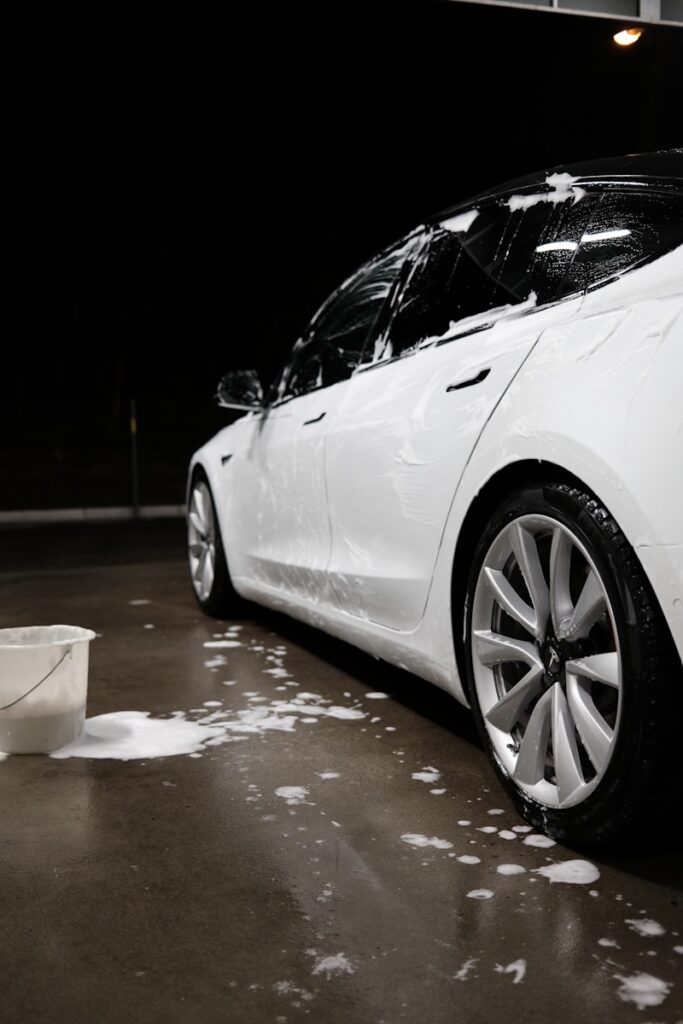
10. **The Indispensable Expertise of Professional Auto Body Services**While the allure of DIY car waxing can be strong, the nuanced demands of achieving optimal protection and a flawless finish often underscore the vital role of professional auto body services. Professionals possess specialized tools, advanced equipment, and extensive experience that ensure consistent, even application and comprehensive coverage, mitigating the risks of streaks, swirls, or uneven protection that can arise from improper home application. They also frequently utilize higher-grade, professional-strength products that deliver superior, longer-lasting protection compared to many off-the-shelf consumer waxes, providing a discernible difference in both appearance and durability.
Many modern car washes, such as BLISS Car Wash, exemplify this professional approach by integrating advanced waxing solutions directly into their services. For instance, during each Sparkle and Transform+ wash, BLISS applies an express wax coating immediately after the cleaning process. This automated application leverages sophisticated equipment to ensure an even, smooth finish, completely eliminating the risk of streaks or swirls. This provides a high-quality wax effect that effectively shields your car from UV rays, dirt, and water spots, keeping the exterior sharp and protected as a valuable interim solution between more intensive, full professional wax jobs.
For those seeking even more robust and long-lasting protection, professional services often offer advanced options like ceramic sealants. The BLISS Transform+ package, for example, includes a ceramic sealant that provides enhanced water-repelling capabilities, superior UV protection, and a durable shield against dirt and contaminants, maintaining the car’s paint in top condition for extended periods. Furthermore, specialized facilities like BLISS’s Polish Tunnel, available at select locations, elevate the finish with a state-of-the-art buffing process. After a Transform+ wash and hand drying, a special polish wax is manually applied, and the vehicle then enters the Polish Tunnel, where specially designed soft fabric buffs the wax to a deeper protection and a longer-lasting showroom shine, complete with a finishing touch of tire dressing.
Professional services also simplify consistent care through convenient membership options. With BLISS’s unlimited memberships, car owners can access frequent washes and wax applications as often as they desire. This ensures that a fresh layer of wax or sealant is continuously applied, maintaining uninterrupted protection against environmental elements. The expertise of a trained specialist goes beyond application; they can evaluate your car’s specific condition, recommend the most suitable treatments, and even spot early signs of damage that might require immediate attention, safeguarding your vehicle’s appearance and value for years to come. This partnership with professionals ensures peace of mind and an expertly cared-for automobile.
Read more about: Beyond the Showroom Shine: 12 Critical Factors Dulling Your Car’s Finish and How to Combat Them
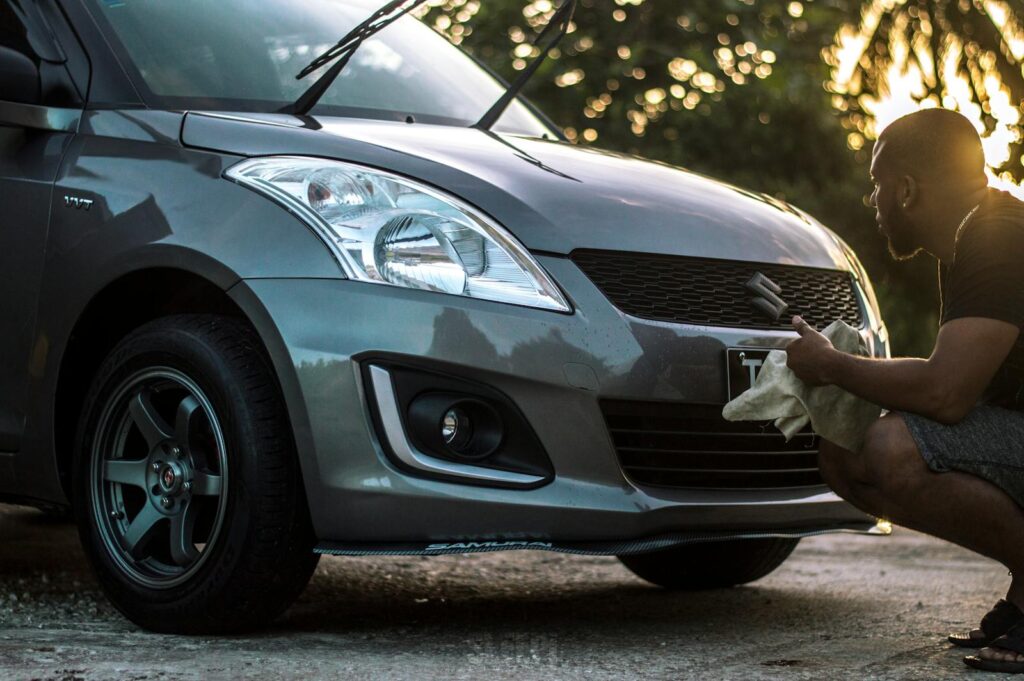
11. **Embracing Eco-Friendly Practices in Modern Car Washes**In today’s environmentally conscious world, the sustainability of car care practices is increasingly important. Modern car washes are at the forefront of this movement, integrating eco-friendly technologies and methods to minimize their environmental footprint while still delivering superior cleaning and protection. This commitment ensures that maintaining your vehicle’s pristine condition doesn’t come at the expense of ecological responsibility, offering a conscientious choice for discerning car owners who prioritize both vehicle care and planetary well-being.
One of the most significant advancements in eco-friendly car washing is the implementation of sophisticated water-saving technology. Facilities like BLISS Car Wash utilize advanced water filtration and reclamation systems, which ingeniously allow approximately 70% of the water used during the wash process to be treated and reused. This drastically reduces overall water consumption compared to traditional methods, where a single home car wash can deplete hundreds of gallons of fresh water, often leading to harmful runoff into storm drains.
Beyond water conservation, modern eco-friendly car washes are also committed to employing biodegradable cleaning agents. These specially formulated cleaning solutions are designed to be safe for the environment, breaking down naturally without leaving behind harmful residues that can contaminate soil or water systems. Despite their gentle nature, these biodegradable agents are highly effective in dissolving dirt, grime, and other contaminants, ensuring your vehicle receives a thorough clean without compromising ecological integrity.
Furthermore, environmental responsibility extends to energy consumption. Modern car wash facilities often incorporate energy-efficient equipment throughout their operations, from advanced washing machinery to lighting systems. This focus on reducing energy usage translates into a lower carbon footprint for each wash, contributing to overall sustainability efforts. By choosing car washes that champion these eco-friendly practices, consumers can confidently maintain their vehicles, knowing they are supporting businesses that prioritize responsible environmental stewardship. This harmonious blend of effective car care and ecological consciousness represents the future of vehicle maintenance, allowing car owners to enjoy a gleaming vehicle with a clean conscience.
**The Enduring Investment in Your Vehicle’s Future**
Read more about: The Controversial Laws Forbidding At-Home Car Washes: A Comprehensive Consumer Reports Guide
As we’ve meticulously uncovered, the consistent practice of washing and waxing your vehicle transcends mere aesthetics; it is a profound investment in its longevity, protective capabilities, and enduring value. From establishing robust barriers against environmental assaults to leveraging advanced hydrophobic effects for effortless cleaning, and from preserving the integrity of your paintwork to significantly bolstering resale value, every step in this comprehensive care routine plays a critical role. We’ve delved into optimal washing techniques, refined waxing and polishing methods, the deep cleansing power of clay bar treatments, and the undeniable advantages of professional auto body services, including their vital eco-friendly contributions. Embracing these practices is not just about a dazzling shine today; it’s about safeguarding your automotive asset against the relentless march of time and the elements, ensuring it remains a source of pride and a sound financial holding for countless journeys ahead. This isn’t simply car care; it’s smart stewardship, securing your investment and enhancing your driving experience for the long haul.


